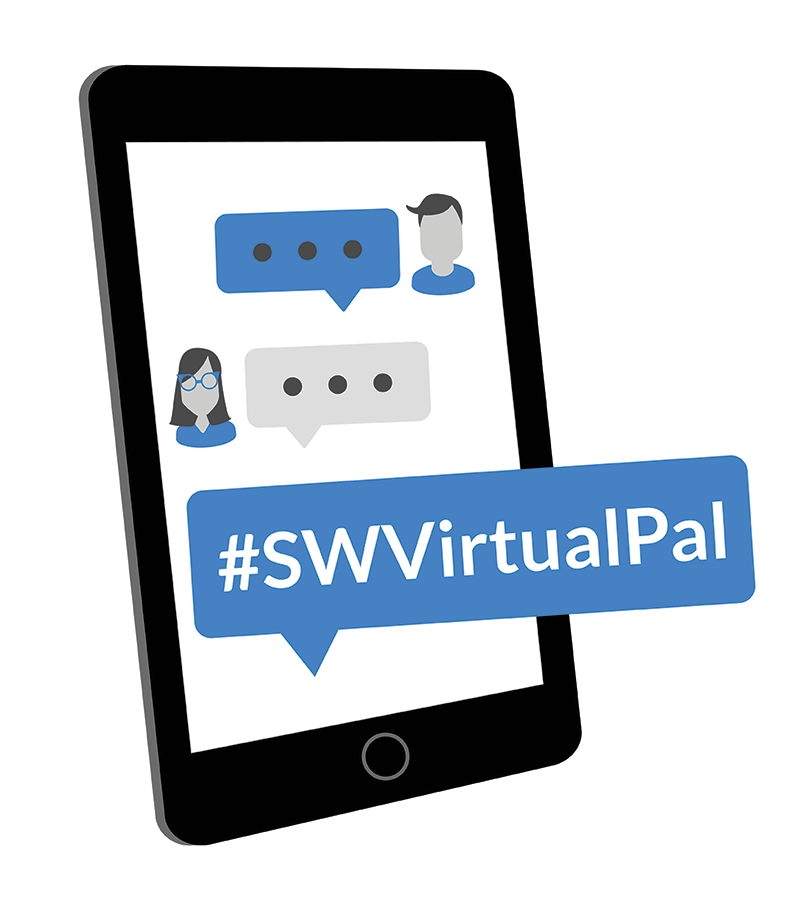Editor’s Note: This post was originally published on the Teaching and Learning in Social Work Blog on June 29, 2018.
 As with all other professions, social work has history of developing local and global ‘Communities of Practice’ (Farnsworth, Kleanthous & Wenger-Trayner, 2016 ). In previous times, the form and work of these communities were largely dictated by geography and cost. The time and financial implications of meeting ‘in person’ very much shaped the nature, the scope and the possibilities of the work; and meeting in person, at that time, was often the only feasible thing to do. The emergence of communication and social media type technologies has changed all of that. Dating back 30 years, new forms of social work academic communities (husITa, 2017) began to surface. Inasmuch as online communities and connections continue to materialize, survive and thrive, sadly notions of ‘real’ still permeate conversations regarding the online world (Couts, 2013; Zgoda & Shane, 2018).
As with all other professions, social work has history of developing local and global ‘Communities of Practice’ (Farnsworth, Kleanthous & Wenger-Trayner, 2016 ). In previous times, the form and work of these communities were largely dictated by geography and cost. The time and financial implications of meeting ‘in person’ very much shaped the nature, the scope and the possibilities of the work; and meeting in person, at that time, was often the only feasible thing to do. The emergence of communication and social media type technologies has changed all of that. Dating back 30 years, new forms of social work academic communities (husITa, 2017) began to surface. Inasmuch as online communities and connections continue to materialize, survive and thrive, sadly notions of ‘real’ still permeate conversations regarding the online world (Couts, 2013; Zgoda & Shane, 2018).
A recent example of a ‘real’ community of learning for practice is that of Social Work Virtual Pal, with its Twitter feed @SWVirtualPal and an accompanying hashtag #SWVirtualPal; the former used to facilitate connection and latter to collate and curate conversations. We, Laurel Hitchcock and Amanda Taylor developed Social Work Virtual Pal due to the benefits we each found from meeting regularly online. What began as a chance meeting on Twitter has turned into a connection that enables us to discuss issues relating to social work education in the US and the UK, and to consider the use of new technologies to support teaching, learning and global connections. To learn more about Social Work Virtual Pal, please check out our previous posts:
– #SWVirtualPal: Hashtagging for Connection on 9/24/16
– Social Work Educator’s Guide for #SWVirtualPal on 12/8/16
Social Work Virtual Pal, for us, is testament to the advantages of new technologies, married with the confidence to ‘have a go’. We have been connecting now for over two years, and in that time have thought together, written together and reviewed various teaching and learning methods together. We developed Social Work Virtual Pal because we wanted to highlight to others the positivity and affordances that are available through the use of new communication technologies. We are therefore bringing @SWVirtualPal to the 2018 Social Work, Education, and Social Development Conference in Dublin, Ireland this July. We hope that conference delegates and the wider social work community will join in and ‘have a go’, by connecting with the twitter feed, in search of their #SWVirtualPal.
Even though we have met face-to-face several times via video calls, we are very much looking forward to meeting each other in person – dare we say ‘for real’ in Dublin in just a few days. Who else will be joining us?
References:
Ballantyne, N. (2017, September 13). husITa celebrates its thirtieth anniversary. Retrieved June 29, 2018, from http://www.husita.org/husita-celebrates-its-thirtieth-anniversary/
Couts, A. (2013, May 7). The Digital Self: Our online lives are our ‘real’ lives. Retrieved June 29, 2018, from https://www.digitaltrends.com/opinion/the-digital-self-our-online-lives-are-our-real-lives/
Farnsworth, V., Kleanthous, I., & Wenger-Trayner, E. (2016). Communities of Practice as a Social Theory of Learning: a Conversation with Etienne Wenger. British Journal of Educational Studies, 64(2), 139–160. https://doi.org/10.1080/00071005.2015.1133799
Zgoda, K., & Shane, K. (2017). Digital Literacy in Social Work Education: A Case Study Incorporating Technology and Social Media Within the Social Work Curriculum. Journal of Nonprofit Education and Leadership, 18(1), Special Issue. http://dx.doi.org/10.18666/JNEL-2018-V8-I1-8350
How to cite this blog post:
Hitchcock, L.I. & Taylor, A. (2018, June 29). Social Work Virtual Pal (#SWVirtualPal)… a very ‘real’ connection! [Blog Post]. Retrieved from: https://www.laureliversonhitchcock.org/2018/06/29/social-work-virtual-pal-swvirtualpal-a-very-real-connection/